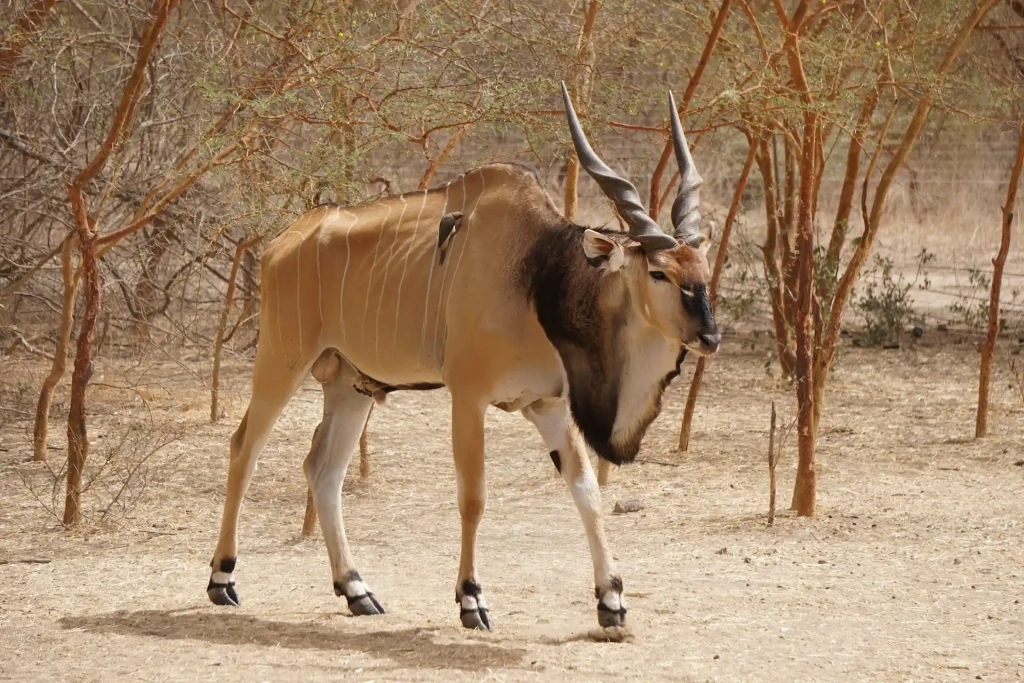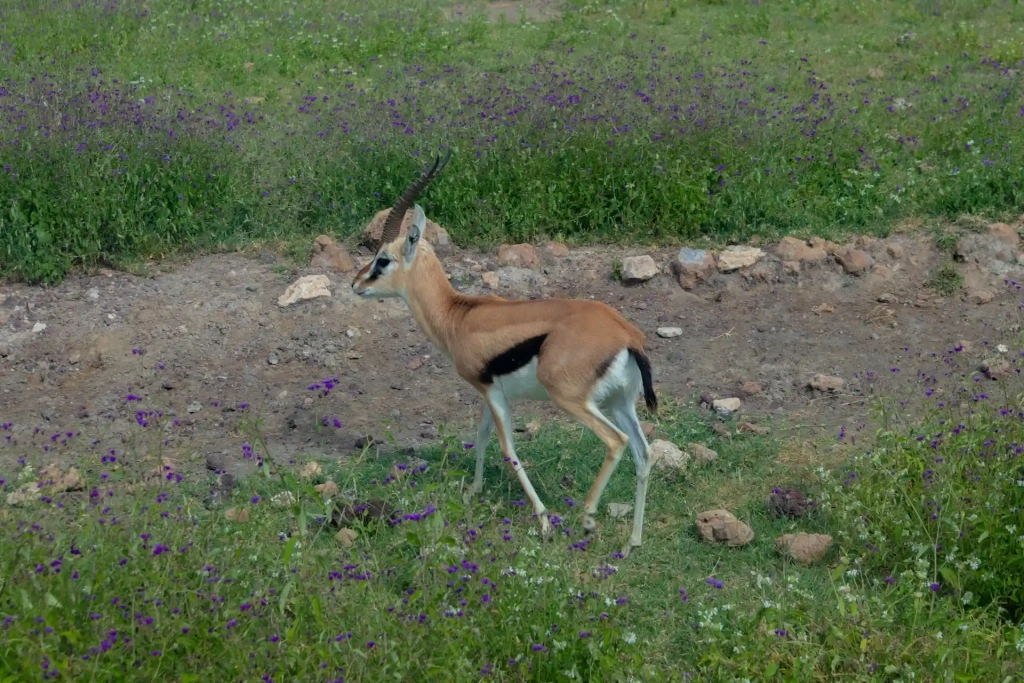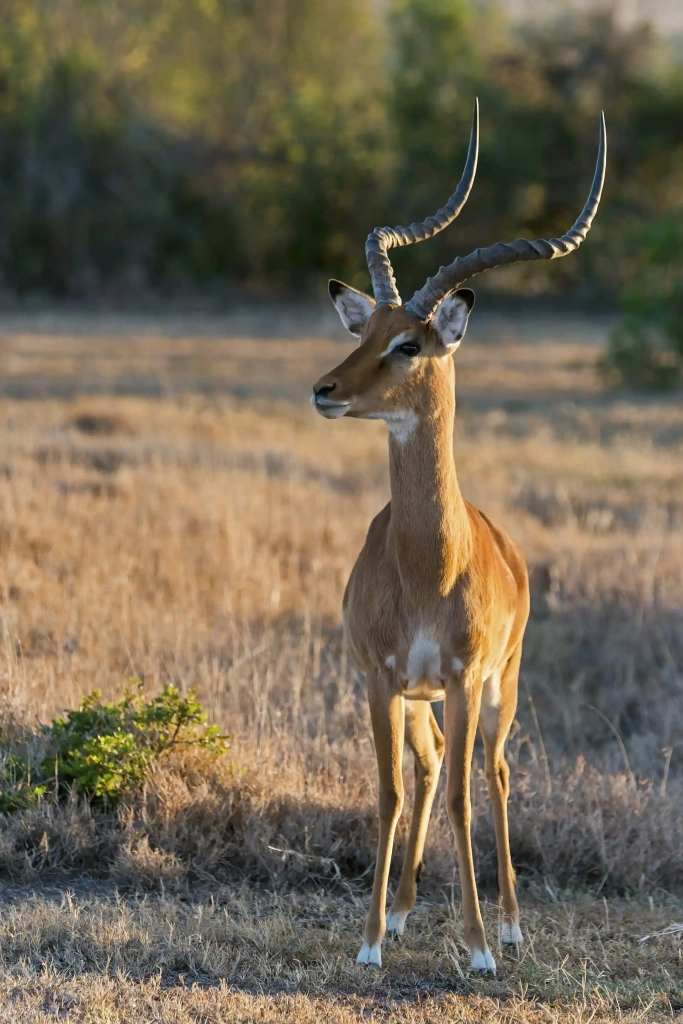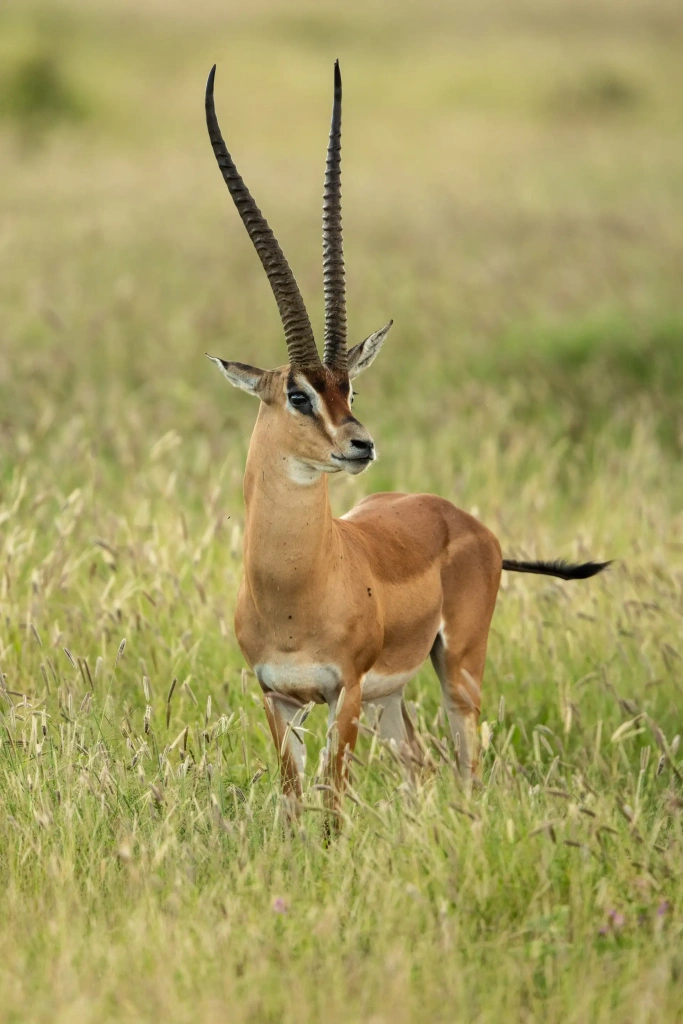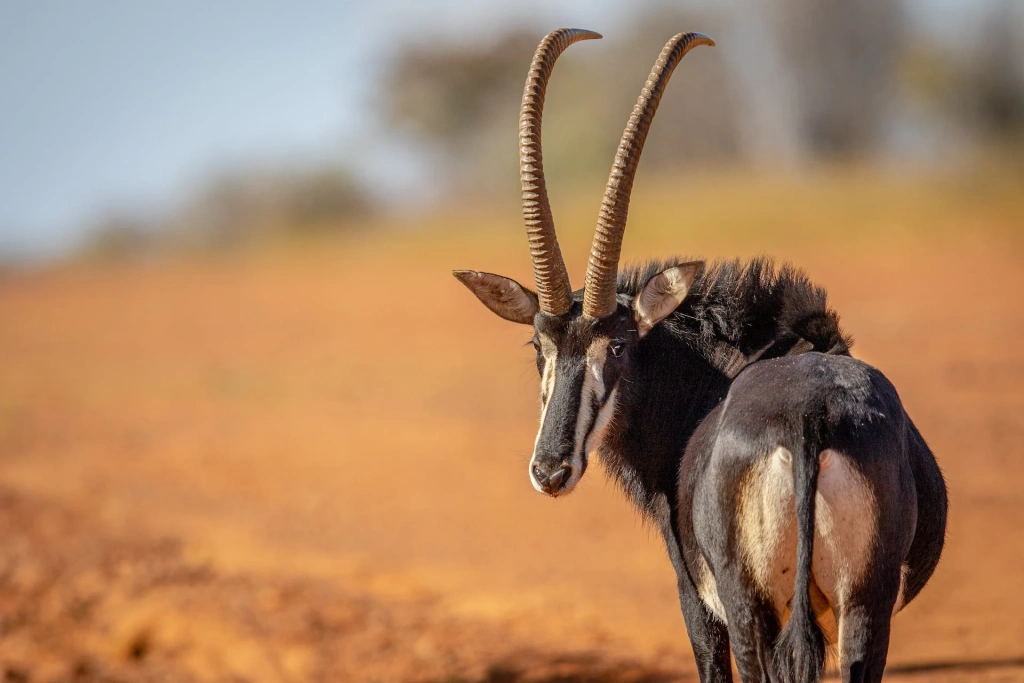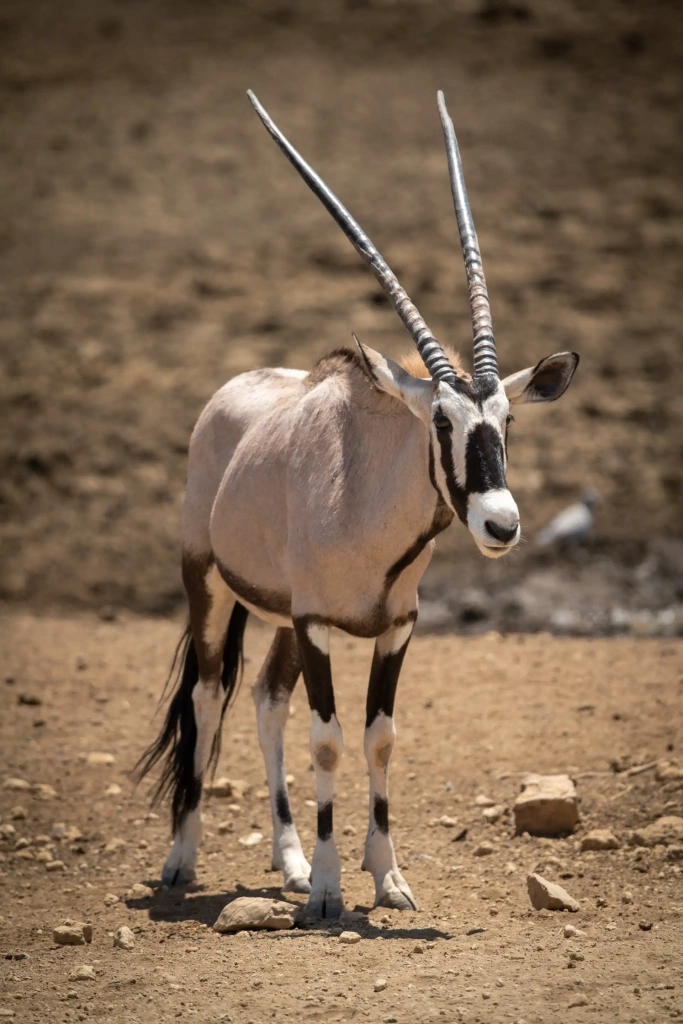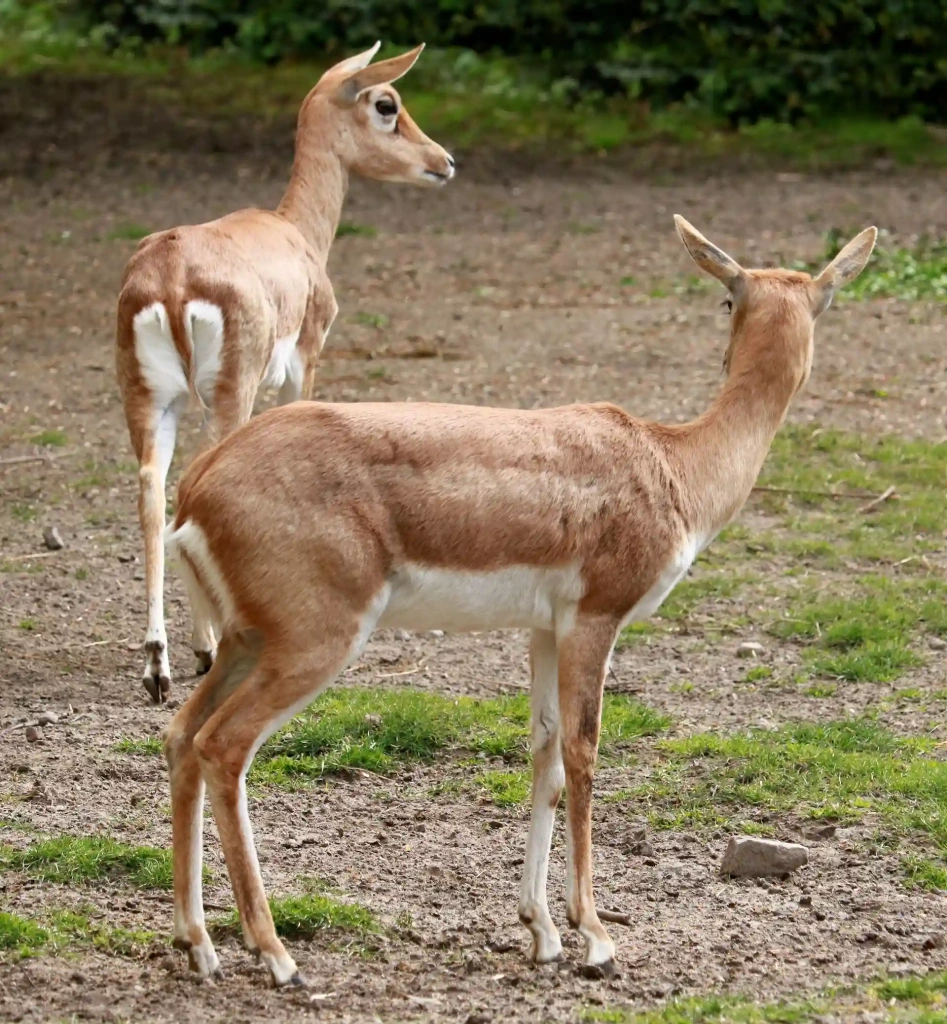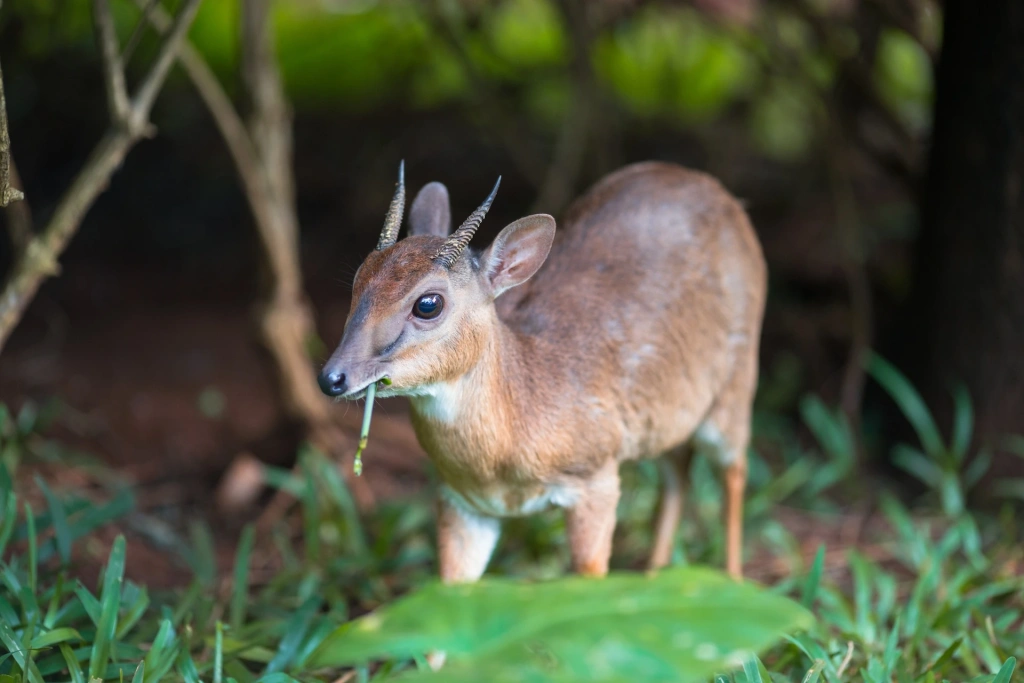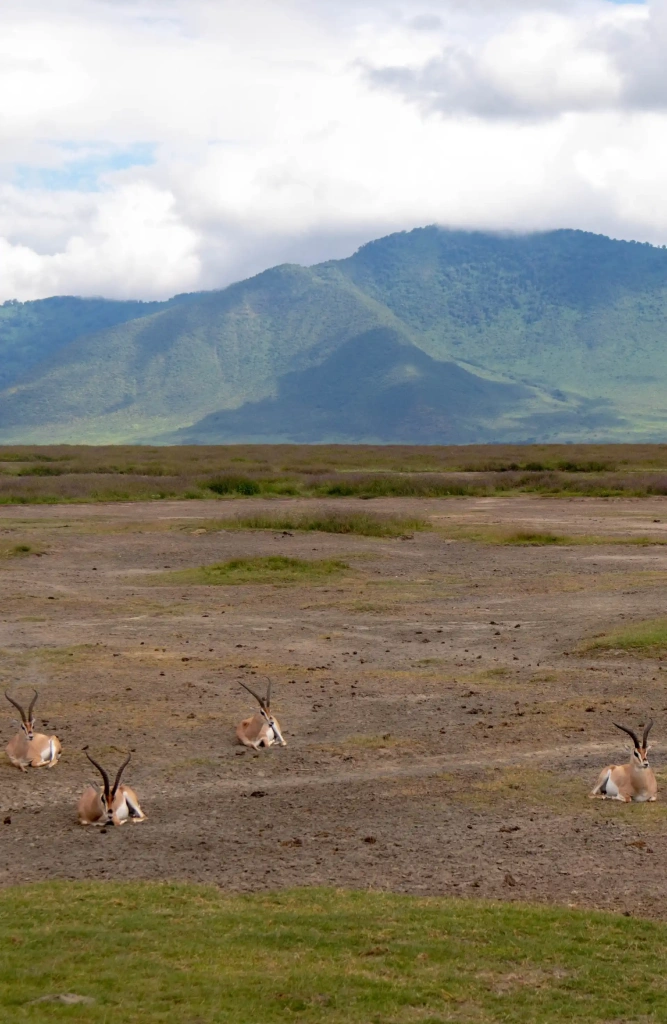Telling antelopes and gazelles apart isn’t always easy — and there’s a good reason for that. All gazelles are antelopes, but not all antelopes are gazelles. So what makes a gazelle a gazelle? And what types of antelopes are out there? In this article, we’ll uncover some of the most fascinating facts about these graceful animals.
To understand who’s who among antelopes, let’s explore the definitions of antelopes and gazelles and their place in the animal hierarchy.
What is an antelope?
There are about 100 species of antelopes, with the majority found in Africa. This group is incredibly diverse. Among the most well-known are blue wildebeests, key animals of the Great Migration across the Serengeti and Maasai Mara. They can grow up to 1.5 meters (4 ft 11 in) tall and weigh around 250 kg (550 lb). Some antelopes are even larger. The largest of all is the giant eland, which can reach up to 1.8 meters (5 ft 11 in) in height and weigh as much as 1,000 kg (2,200 lb).
What about gazelles?
Gazelles are a subgroup of antelopes, primarily belonging to the genus Gazella, though some species are classified under related genera such as Eudorcas and Nanger. They are significantly smaller than large antelopes like the eland. Most gazelles stand no taller than 1.1 meters (3 ft 7 in) at the shoulder.
Gazelle classification can also be somewhat confusing, although less so than that of antelopes in general. One of the most well-known is the Thomson’s gazelle, or "Tommie." It was named after Scottish explorer Joseph Thomson, one of the first to study the lands of the Maasai people. This species lives in Tanzania and Kenya.
With slender, graceful bodies and long legs, they are built for speed and agility. Gazelles typically weigh between 15 and 75 kg (33 to 165 lb), depending on the species. Their defining trait is speed — some species, such as the Thomson’s gazelle, can sprint at up to 80–90 km/h (50–56 mph), with short bursts potentially reaching 97 km/h (60 mph).
So, how can you tell a gazelle apart from other antelopes on safari? It’s not easy — some antelopes closely resemble gazelles in both appearance and behavior, but aren’t gazelles at all. Take the impala, for example: it’s slender, medium-sized, and incredibly fast, yet it’s not a gazelle. On the other hand, there’s another antelope that looks very similar to an impala and is nearly identical in size and weight, but it is a gazelle: the Grant’s gazelle. The key to telling them apart lies in the shape of their horns.
Gazelles vs. antelopes: key differences
So what are the key differences between gazelles and other antelopes? There may not be many, and they’re not always easy to spot — but they do exist.
Horns
In most antelope species, only males have horns. Among gazelles, however, both males and females often have horns. Interesting fact: antelopes don’t shed their horns like deer do. They grow continuously throughout the animal’s life.
Gazelle horns are sharp and slightly curved backward. Other antelopes have more variation — horns can be spiraled, dramatically curved, and so on.
Habitat
Gazelles live only in open, dry plains and desert steppes, where high-speed movement gives them an advantage. They don’t rely on water sources, as they get moisture from the plants they eat.
Some antelope species also inhabit open savannas, but many are adapted to forests, thickets, wetlands, or even mountainous regions, typically where water is more abundant.
Appearance and size
All antelopes are primarily brown, with shades of gray, reddish, or yellow, and typically have white underbellies. Their coloration ranges from light sandy tones to dark brown. Many have dark stripes or facial markings.
Gazelles are typically lighter in color and more uniformly shaded, providing them with better camouflage in open areas.
There’s also a noticeable difference in size. Gazelles fall within a relatively narrow size range — they are neither very large nor very small. Their shoulder height typically ranges from 54 to 120 cm (21 to 47 in). Antelopes, on the other hand, show a much wider variation. They include giants like the eland, as well as tiny species such as the dik-dik or the royal antelope. The smallest antelopes stand just 25–30 cm (10–12 in) at the shoulder and weigh as little as 3.5 kg (7.7 lb).
Behavior
Gazelles are known for "stotting" — high vertical jumps with all four legs off the ground. Scientists aren’t sure why they do it, especially when predators are nearby. One theory is that it’s a show of strength: “Don’t bother chasing me.”
Gazelles are generally faster and more agile than other antelopes. Their light, narrow bodies, small heads on long necks, and slender legs enable them to run, leap, and quickly change direction. They can sprint at speeds of up to 80–95 km/h (50–59 mph).
Ironically, some of the best jumpers among antelopes are springboks — very similar to gazelles but classified in a separate genus, Antidorcas (Greek for “not-gazelle”) due to jaw differences. They can leap up to 2 meters (6 ft 7 in) high with stiff-legged jumps.
All antelopes are herd animals. Their herds often number in the hundreds. This is especially true for migrating wildebeests, whose herds can merge into massive groups of thousands.
Gazelle herds also sometimes reach hundreds, but more often they gather in smaller groups, usually around 10 individuals, sometimes a few dozen. If you spot a small group of antelopes, chances are they’re gazelles.
Diet
Another partial difference lies in diet. All antelopes are herbivores, and this is 100% true for all gazelles. However, some other antelope species have interesting exceptions. Duikers, small antelopes living in the tropical forests of Africa, have been observed eating eggs, birds, and even frogs. This makes them technically omnivorous.
With practice, like during a safari, you’ll get better at telling different antelope species apart. Once you’ve seen Grant’s gazelles in the wild a few times, you won’t mistake them for impalas again. So pick a destination and start planning your trip!
Top places in Tanzania to see gazelles and antelopes:
Each of these parks is home to numerous antelope and gazelle species, providing the perfect opportunity to compare them side by side. And if you’re ever unsure, your experienced guides will be happy to help and share fascinating facts about these animals. Come experience the magic of a Tanzanian safari!
All content on Altezza Travel is created with expert insights and thorough research, in line with our Editorial Policy.
Want to know more about Tanzania adventures?
Get in touch with our team! We've explored all the top destinations across Tanzania. Our Kilimanjaro-based adventure consultants are ready to share tips and help you plan your unforgettable journey.















